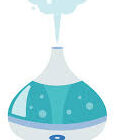How To Make a Homemade Dehumidifier with Charcoal
If you have run out of cash and the humidity rises from time to time, using a DIY dehumidifier might help.
The good thing is that making a dehumidifier does not require you to get anything from the store.
This type of solution will not be as effective as a dehumidifier that you can buy on Amazon.com, such as the Frigidaire 70-pint dehumidifier. You can use a DIY solution to hold on until you can gather enough money.
In another article, we looked at the effects of high humidity on the body. There are many! From breathing complications to aggravating asthma, you need to be cautious.
If your indoor humidity rises above 55%, it is too high. Between 60 and 70 percent humidity level, you can have a serious mold infestation in your home.
Good thing is that you can make your own dehumidifier. Also, you will find that here we discuss some of the ways to lower humidity naturally without using a store-bought dehumidifier.
Also read: Why is my Levoit humidifier not working?
But first…
How do you dehumidify a room without a dehumidifier?
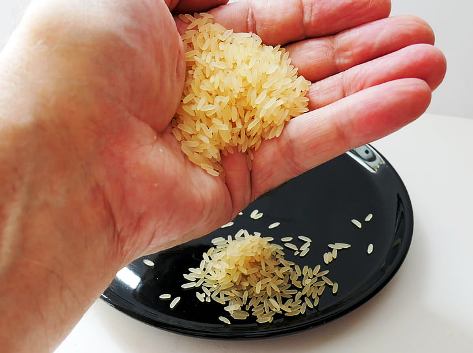
DIY methods to lower humidity in the indoor space do work. But these are temporary solutions.
It is best to buy a dehumidifier with a good space rating, humidistat, drain hose connection, and other features as soon as possible.
If you want to lower humidity in a small space, you can use these do-it-yourself methods effectively, or you can get a battery-operated dehumidifier.
Simple Natural DIY Humidifier Ideas
You will be surprised that there are so many options that you can use to build a homemade dehumidifier. A few of the most effective ones are as follows:
1. DIY dehumidifier charcoal
Most people ask: Can charcoal be used as a dehumidifier? It absorbs moisture very well, and if the humidity levels in your house are not crazy, it will definitely help.
The procedure
To make this simple contraption to get rid of extra moisture from the air, you need a container; a plastic one will do fine. You can then perforate the lid, add charcoal briquettes inside, and then cover it.
Place the container inside the room with the highest moisture content. This can be the basement, bathroom, or kitchen. Give it time; the charcoal will soak up the moisture, effectively reducing the humidity.
Also read: How to control humidity in a grow tent
Check in a week or two.
The charcoal will soak up the water, and when it becomes waterlogged, you can replace it with fresh briquettes.
2. Using two buckets and rock salt: DIY dehumidifier with fan
If you do not mind a little work, you can build a good-looking DIY dehumidifier. First, you need two buckets, a drill, industrial-strength salt, a standalone fan, a wooden or plastic crate, a second bucket, and chicken wire or mesh.

The procedure
Take the first bucket, remove the lid, and set it aside. You won’t need it.
Drill a ¼-inch hole in the bottom of the bucket
Cut a piece of chicken wire or mesh, enough for the bottom of the bucket and place it inside to cover the hole you just drilled
Add rock salt to the bucket and place it on your crate, or you can make it a wooden stand with big gaps between the planks at the top. Make sure the hole you drilled is on one gap
Place a second bucket under the stand or crate. Make sure the hole of the first bucket points to the second bucket
This is also a good DIY dehumidifier with a fan. With the makeshift bucket dehumidifier, you can use a standalone fan to blow the moist air of the room towards the buckets.
You are done! Now just wait for the rock salt to start absorbing moisture. Once it becomes saturated, the water will pass through the hole and drip into the second bucket.
Also read: Why does my dehumidifier blow cold air?
It might not work on the first day, but on the second day, the rock salt will have absorbed enough water, and it will start dripping into the second one.
3. Using baking soda to lower humidity in the closet
If you have too much humidity in the closet, cabinets, or some other small space, you can use baking soda as a dehumidifier. It is easy, affordable, and easy to find in the market. Probably, you already have it at home.
The procedure
- Take a wide, shallow pan.
- Add a good amount of baking soda to it.
- Place the pan in the middle of the closet, pantry, bathroom, or small closet
- Just wait for the baking soda to do its magic
What happens?
The baking soda absorbs moisture, and then it hardens up. When that happens, you can change it with fresh help.
In large rooms
If you have a large kitchen, bathroom, bedroom, or living room, you can use baking soda. Just get a few to several pans, add baking soda, and leave them. This means you need copious amounts of baking soda, so it might not be worth it for large rooms.
Also read: How Do I Stop Humidifier White Dust?
4. Using silica gel
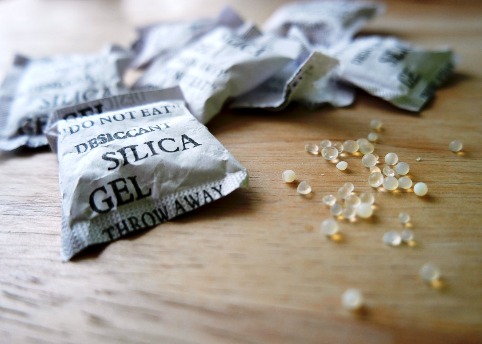
When we promised you simple, DIY methods to lower humidity in your space, we meant it! You have seen the little sachets of silica gel that come with new shoes, electronics, and other items. They are put there to absorb moisture so that it does not get to the shoes.
Now, you can use the same silica gel to lower the moisture level in your indoor air. You can buy any amount of silica gel from online stores.
How does silica gel absorb water?
Silica gel has many small pores that absorb water. That is how it removes moisture from the air.
Also check our post on: Why is my Crane humidifier not working?
Like the baking soda method for lowering humidity, even silica gel works best in small spaces such as bathrooms, kitchen cabinets, closets, and pantries.
The procedure
Pour the silica gel inside a sock, tie the open end, and leave it where you want to lower moisture. Check it after some time.
If you have silica gel beads that change color when they are saturated, you will know when they cannot absorb any more.
Remove them, dry them in the oven at 82°C, and reuse them. This is probably the most cost-effective method for lowering humidity in small spaces.
5. Table salt and rice: Absorbs only a small amount of moisture
If you only want to remove a little moisture from your indoor air, you can use table salt and mix it with rice.
You have probably heard that if a smartphone gets wet, you should bury it in rice. This is because rice is a super absorbent material.
The only disadvantage here is that you will have to throw away the rice. I mean, you just cannot go ahead and cook it, can you?
Also check: Pure Enrichment Humidifier Not Working: Solved!
Place the table salt in a shallow dish, a large one if you may. You can mix it with rice so that it does not harden up too much. This will absorb moisture in small spaces, such as the closet.
If you have enough raw rice to spare, you can also use it as your homemade rice dehumidifier. It really works the same way as salt.
6. Using calcium chloride
Although calcium chloride is used for commercial purposes, you can buy it in small quantities from drug stores. You can also order it online.
Since it comes in flake or pellet form, you should use it in a sock because the sock is porous. Tie the sock to a wire or a stick and hang it on an open bucket such that the sock does not touch the side or the bottom of the bucket.
When it starts absorbing water, it will drip into the bucket. Empty it when the need arises. If the calcium chloride becomes too waterlogged, just replace it with a fresh amount.
7. Cat litter: temporary DIY dehumidifier
Some people use cat litter to remove condensation from their windows. To do this, just place a good amount of litter in a sock, tie it on the open end, and place it on the window.
You can place the sock with the litter inside a container so the water it draws does not spill. This is an effective method, but again, it is only good for lowering humidity in a small space.
Place it in the middle of the closet and leave it there for several days. If you measure the humidity with a hygrometer, you will realize it has dipped.
DIY Dehumidifier FAQ
Making a homemade dehumidifier is simple, as you have seen in the above simple guide. However, most people still wonder whether these DIY ways to lower moisture do work.
These frequently asked questions and their answers will show you that indeed, this works!
Can you make a homemade dehumidifier?
You can use charcoal, salt, silica gel, and raw baking soda to make your homemade dehumidifier. These are simple and effective solutions that don’t require any installation.
You can only use these solutions when the humidity in your room is not too high; say, you want to bring it down from 65 percent to 55 percent. If you have runaway humidity levels at home, using a store-bought dehumidifier is better.
Can salt dehumidify a room?
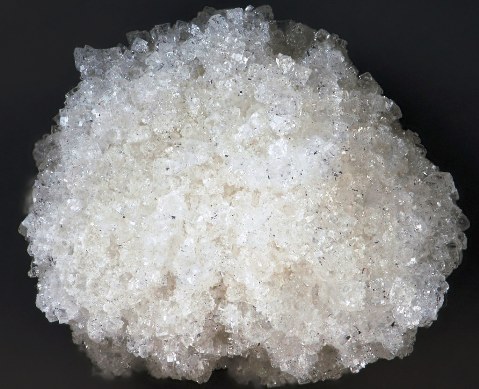
Rock salt is the king of all homemade dehumidifiers. You just need the rock salt, which you can buy from the local store or order online.
Place the salt in a medium-sized bucket (and punch holes in the bottom), then place that bucket inside a larger bucket.
For efficiency, place the bucket of rock salt where the humidity is the highest. If it is in the bathroom, place it there.
Keep checking the bucket because water will collect at the bottom of the bucket. Keep adding more rock salt.
How can I make moisture absorbers at home?
You could use any of the methods outlined below:
Rock salt method: Place rock salt in a bucket with holes in the bottom and place this bucket inside another one. As the salt collects water, it dissolves, so keep on adding more rock salt.
Baking soda method: Place a good amount of baking soda in a shallow pan and place it in the bathroom or area with the highest humidity. The baking soda hardens up as it absorbs moisture. Replace it when it turns hard.
Charcoal: Place charcoal inside a container, and then punch holes in the lid of the container. Keep this container in a high-humidity place, and change the charcoal after some time. You will notice that the charcoal becomes waterlogged.
Please note that using activated charcoal will not be as effective as regular charcoal. However, it is very effective at removing mycotoxins.
Is charcoal a good dehumidifier?
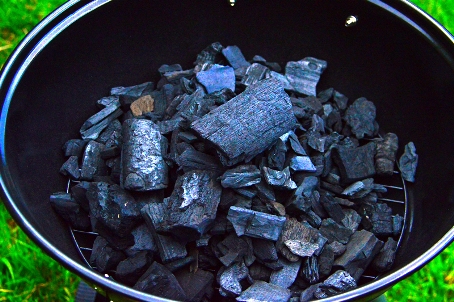
When used in small spaces such as the bathroom or the closet, a charcoal dehumidifier works very well.
Perhaps the only other homemade dehumidifier that can work as well as charcoal is rock salt.
Like the other homemade dehumidifiers we have discussed here, use charcoal in small spaces and only when the humidity level is not too high.
What can be used as a dehumidifier?
A perforated bucket filled midway with charcoal briquettes is a good dehumidifier.
Also, calcium chloride in a sock collects water. Try using silica gel and using two buckets, one with a hole filled with rock salt, and the second one to collect water.
Baking soda in a shallow, wide pan also works for small spaces.
Does baking soda draw out moisture?
It absorbs moisture, thereby lowering the humidity. However, change it when it hardens up to continue removing moisture from the air.
Does putting cat litter in socks stop condensation?
Place cat litter in a sock, and then place it in a container. The litter will absorb moisture, effectively clearing the condensation. This is a simple, yet effective, method.
What can be used as a dehumidifier?
Charcoal briquettes, table salt, silica gel, cat litter, baking soda, and calcium chloride flakes do a good job of drawing moisture from the air. They can effectively lower humidity in small spaces.
Can rice be used to absorb moisture?
Rice is an absorbent material, and unlike other hygroscopic things that tend to become liquid when they absorb too much moisture, rice stays solid.
If you place a bowl of rice in a humid room, it will help draw some of the moisture out of the air.
But it can only do so much, so it will not be of much help if the humidity level is too high.
Can you use rice as a dehumidifier?
No. While it can draw moisture from a phone that has been exposed to water, it will not do a good job as a dehumidifier.
Besides, you would have to use a lot of rice in the process, and you would have to dispose of it since you don’t want to eat it.
An article on The Verge shows that rice is less absorbent than cat litter, oatmeal, and others. But you could use instant rice because it absorbs moisture faster.
I guess what we are trying to say here is that raw rice is really not good as an absorbent. If you don’t mind using instant rice, which is costly, it is better than raw rice.
Does table salt absorb moisture?
Common salt will absorb a small amount of water. You can use it as a temporary means to lower the humidity while you wait to buy a dehumidifier.
It is not too reliable, especially at temperatures above 18°C. Warmer air holds more moisture.
What kind of charcoal absorbs moisture?
Charcoal briquettes are very good for absorbing moisture. In addition, they can also absorb odors, doing the same job as an air purifier.
How do you make a charcoal dehumidifier? Perforate the top or sides of a bucket and add your charcoal briquettes. They will absorb moisture and smell.
How do I dehumidify my basement without a dehumidifier?
Simple! Get a 50-pound bag of rock salt from the hardware store and then put it in the basement.
Place it on a stand that is made of wood or plastic to prevent corrosion. When the rock salt absorbs water, it starts to drip into the container that you will place under the stand.
Check it often so that once it is saturated, you can change it.

Final Thoughts on DIY Dehumidifier
You can make a DIY dehumidifier for grow tent, to supplement the use of a store-bought one and save on your electricity usage. However, when used alone, DIY methods for lowering humidity are only temporary solutions.
Eventually, do buy a dehumidifier from Amazon or another online marketplace. It is the most effective way of lowering humidity in large spaces.
Remember, for your indoor spaces, the relative humidity level should be between 30 and 55%. If the humidity level rises above this, it will cause mold to grow.
If exposed to this fungus, your family could start showing the signs of mold toxicity.
